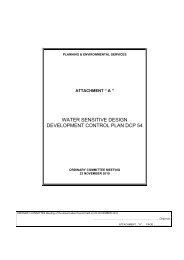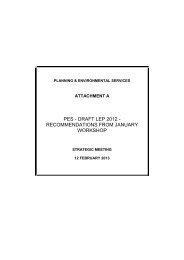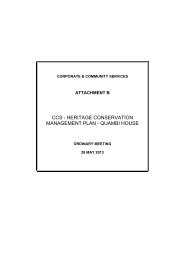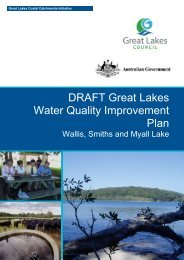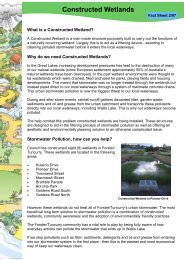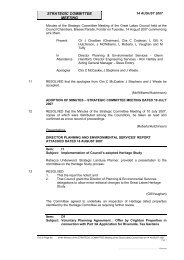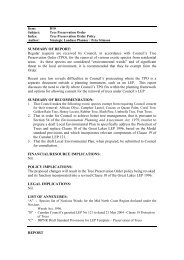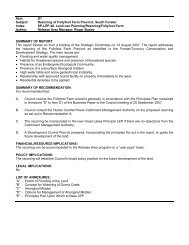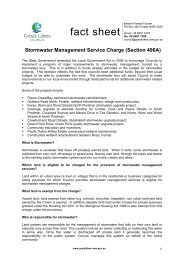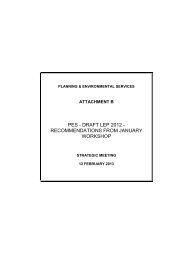smiths lake planning study volume 1: text - Great Lakes Council
smiths lake planning study volume 1: text - Great Lakes Council
smiths lake planning study volume 1: text - Great Lakes Council
Create successful ePaper yourself
Turn your PDF publications into a flip-book with our unique Google optimized e-Paper software.
STORMWATER MANAGEMENT 38<br />
4.4.4 Retention of Vegetation<br />
Where possible, as much native/existing vegetation as possible should be retained. This<br />
vegetation serves a key role in reducing soil erosion (through minimising the impact velocity of<br />
rain drops) and maintaining the soil-water balance. Much of the present SLVA development<br />
area has been undertaken in a way which achieves this goal.<br />
4.4.5 Minimisation of Directly Connected Impervious Area<br />
Wherever possible, impervious areas should not (Figure 4.5) be directly connected to trunk<br />
stormwater drainage systems. Opportunities should be explored to:<br />
• connect impervious areas to dedicated infiltration areas;<br />
• reduce the amount of impervious area by substituting modular pavers for concrete for<br />
example; and<br />
• reuse or recycle impervious area runoff (eg. rainwater tanks)<br />
Figure 4-5 Example of Directly Connected Impervious Area<br />
4.4.6 Education and Awareness<br />
Especially in the case of Smiths Lake, <strong>Council</strong> will need to consider the preparation of<br />
appropriate education and awareness raising material for council officers, builders and<br />
residents. This material will need to encompass both construction and operational stormwater<br />
issues, and is particularly important given the ‘non-traditional’ nature of proposed site<br />
stormwater management recommendations.<br />
SMITHS_LAKE_PLANNING_STUDY.DOC<br />
O C E A N I C S<br />
A U S T R A L I A




